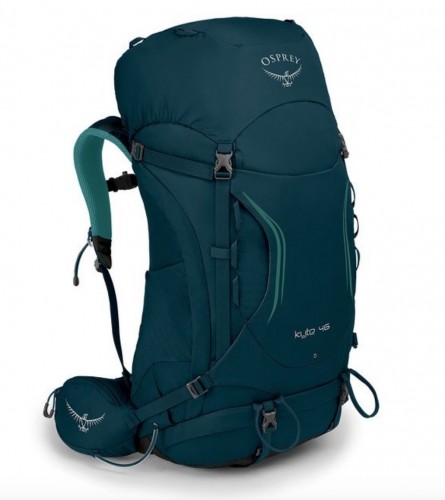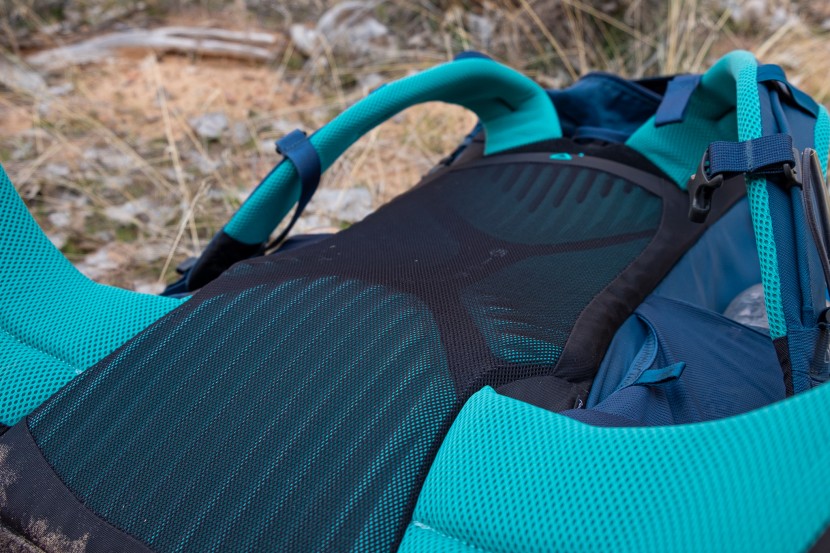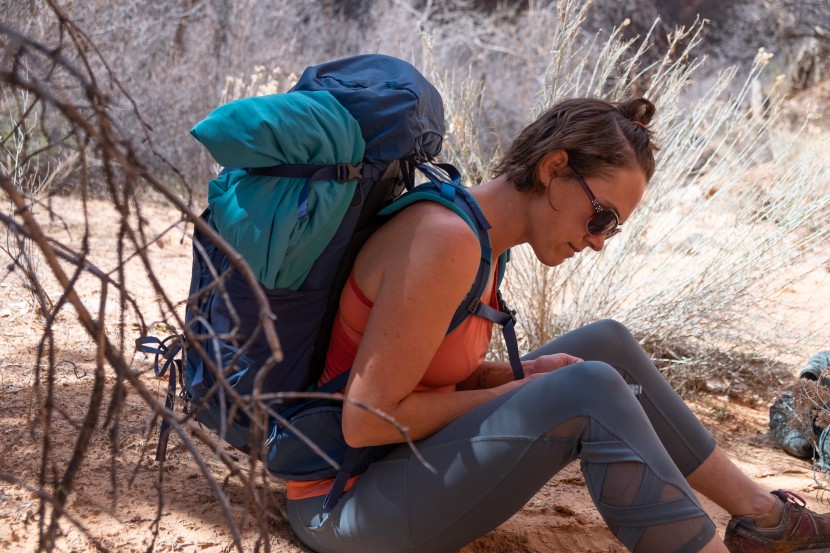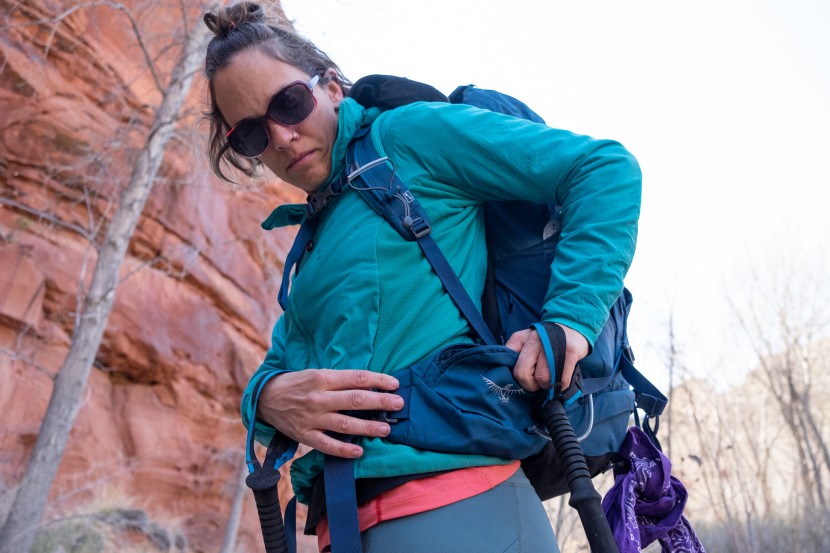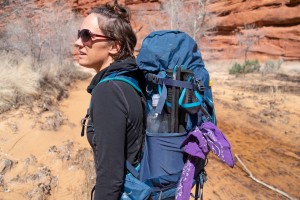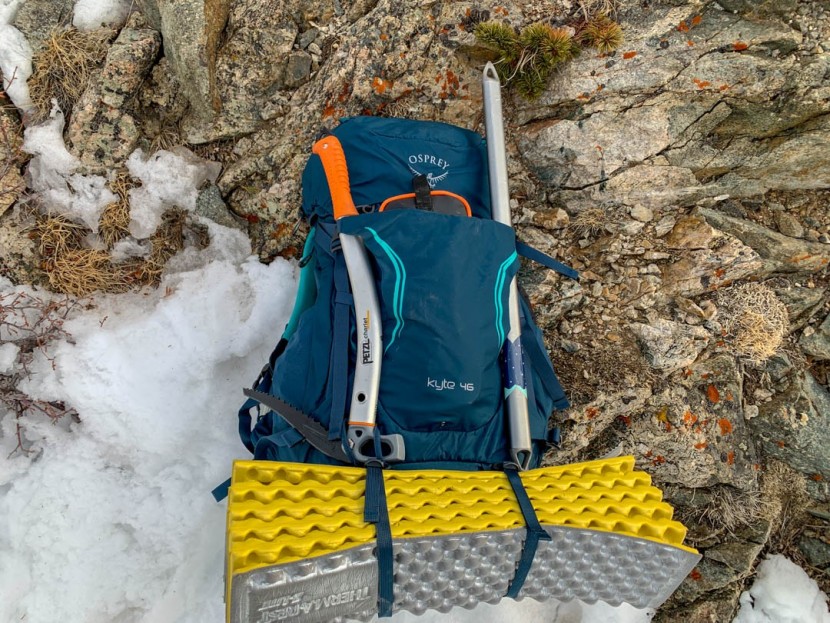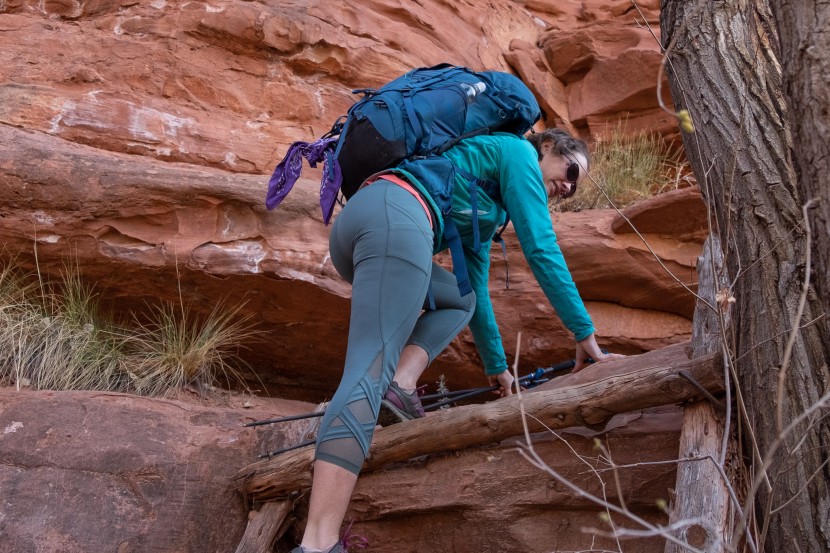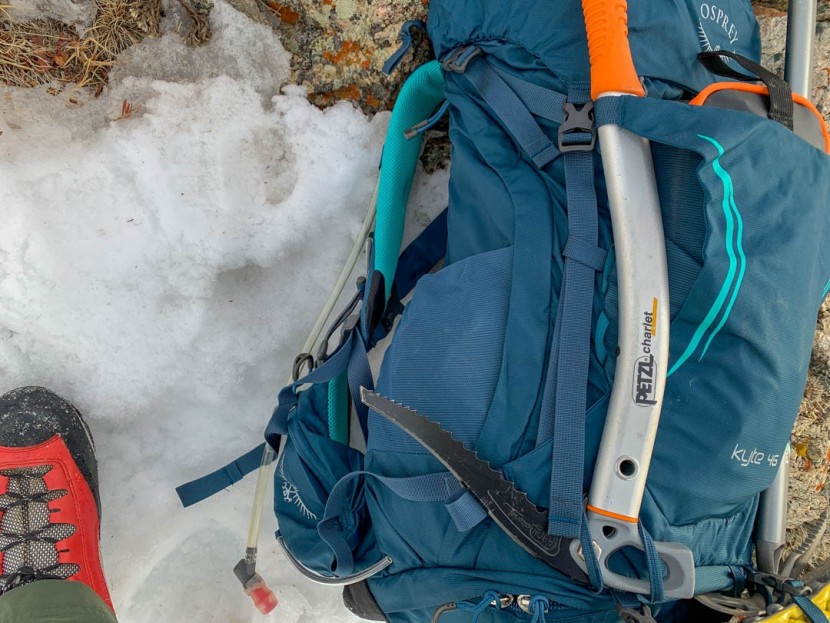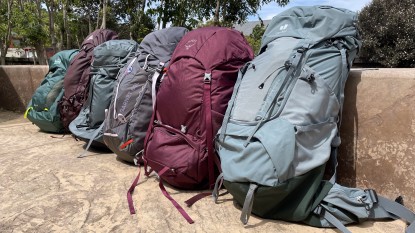Osprey Kyte 46 Review
Our Verdict
Our Analysis and Test Results
We examined this pack inside and out, and the Kyte 46 impressed us with its small-but-mighty abilities. We loved taking this pack in all sorts of terrain, from the alpine for a romp in technical terrain with a compact backpacking setup to scrambly desert canyons. The Kyte has features where you need it, and despite its small volume, it still has ample room for most backpacking trips. Backpackers with lightweight gear would find this pack plenty spacious, but if you have heavier, bulkier gear or plan to go on winter trips, this may not be the model for you.
Comfort and Suspension
The Kyte wowed us with all-day comfort, even when trekking up steep, snowy inclines with crampons. The LightWire frame suspension system easily transfers heavier loads to your hips and made the pack feel light as a feather.
The Kyte's suspension, while very comfortable with moderate loads, can buckle in the back padding when loaded with more than 25 pounds. We still found it comfortable, but it is worth noting that it may bother some users' backs. Osprey doesn't use their trampoline style suspension on the Kyte but opts for the more traditional back panel that fits closely to your back. We found it very comfortable but it doesn't offer the breathability you might want in hot weather.
The integrated hip belt offers a comfortable cushion for smaller women, but ladies with larger hips may find the short section of padding lacking. The Kyte does use 1.5-inch webbing on the hip belt, so even if the padding falls a bit short, the wider webbing should help. Some hip belts have trouble staying in place, but the Kyte's belt always rode just where we wanted it. The shoulder straps are well-padded, giving you plenty of comfort. They curve under the arms quickly, offering plenty of freedom of movement.
The load lifters are well-positioned to take the load off your shoulders and enhance lateral stability when navigating difficult terrain that requires both hands and feet.
Organizational Systems
The features list seems to be never-ending with the Kyte. Even though the pockets aren't the largest or easiest to use, we appreciate their storage.
The hip pockets are positioned too far back to be easy to reach but are large enough to fit some phones. Dual water bottle pockets are nice and deep but too narrow for a Nalgene bottle, and we even found it tight for getting a Smartwater bottle in and out. The side entry makes it possible to do while the pack is on, but having a partner to fetch your water is much preferred.
The back pocket, typically our favorite catch-all during the day, is so tight that not much gear can fit. A light layer can easily pack in there, but a puffy jacket will need to be strapped to the side or put into the main compartment. The lid compartment is handy, and a zippered mesh pocket under the lid makes a great place to stash essentials that you want to keep track of, like car keys and ID. The opening to the main lid compartment is averaged sized.
Osprey's “stow-on-the-go” pole attachment is handy if you want to free up your hands for taking photos or scrambling some rough terrain, but for long-term travel, we recommend stashing your poles on the side of the pack. They rubbed our tester's arms too much to walk with them underneath for long.
An external reservoir pocket is convenient if you've ever tried to wrestle a full water bladder back into your loaded pack. It's still a bit tight to insert the bladder into the external pocket but is much more doable than an internal one where all your gear is fighting against you.
The sleeping bag compartment opening is smaller than average, but the Kyte is only a 46-liter pack, so you would expect to be carrying a lighter and smaller sleeping bag than average as well. And if you're not, you can still access this space from above.
All in all, the features are all there, they are all functional and useful, and while none of them offer the ideal configuration, we still find the Kyte to be an excellent pack.
Weight
For its capacity, the Kyte is on the heavy end of the weight range of models we tested at 3.6 pounds, but when considering the durable materials and all the features Osprey includes, we think the weight is worth it for the right user. If you will be spending your time off-trail bushwacking and squeezing through slot canyons, the Kyte brings the fabrics you'll need to avoid shredding your pack.
Adjustability
With a sliding torso adjustment and multiple options for the exterior compression straps but not hip belt adjustment, we ranked the Kyte average for adjustability.
We love the sliding style velcro torso adjustment because this type offers infinite fine-tuning to get just the right fit, especially if you aren't confident in your torso size when purchasing. However, we wish the hip belt had adjustable padding because many women won't find the padded section to wrap their iliac crest and will end up with webbing riding on their hip bones.
Value
This is a budget-friendly option. It is a durable workhorse with a sleek design to handle everything you need. If you're looking for a pack that can easily double as a burly day-hiker, carry your climbing gear to the crag, and still contends with a regular backpacking outing, this pack is well worth a look.
Conclusion
Everything considered we would recommend the Osprey Kyte to a friend. It isn't the model we would pick for basic backpacking but, if your trip plans include ice climbing, slot canyon squeezing, and other pursuits that could tear up the lightweight fabric on other packs but you don't need a huge capacity, the Kyte might be the ticket. It offers a comfortable carry and all the features you need for a low price.


